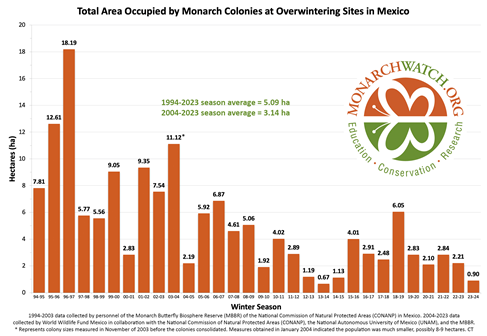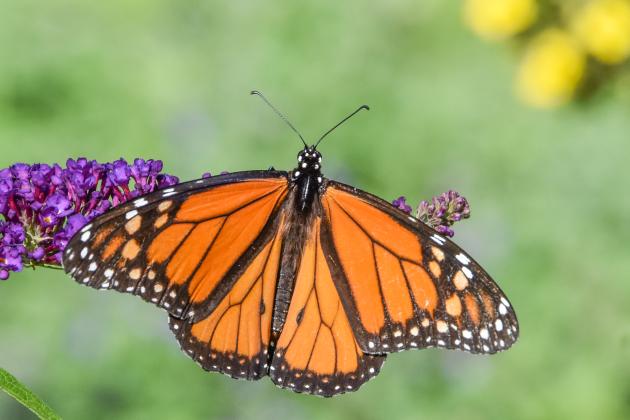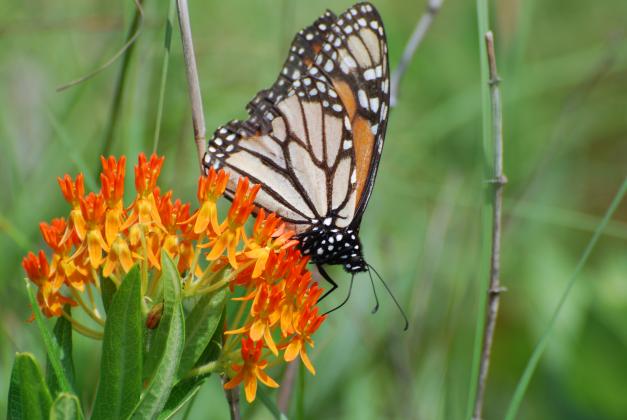
Presence of eastern monarch butterflies in their wintering habitat drops 59.3%
Authorities in Mexico City recently announced that the size of the eastern monarch butterfly population that overwinters in Mexico is the second smallest on record. The numbers are so low, that few monarchs will be seen this coming summer in many parts of the U.S. and Canada.
The total forest area occupied by overwintering monarch colonies was reported as 0.90 hectares which is a staggering 59.3% decrease from the previous season (2.21 hectares) by the WWF-Telmex Telcel Foundation Alliance, in collaboration with the National Commission of Natural Protected Areas (CONANP), the National Autonomous University of Mexico (UNAM), and the Monarch Butterfly Biosphere Reserve (MBBR).
This is the second lowest number of hectares counted to date. The lowest was 0.67 hectares during the 2013–2014 overwintering season. A chart produced by Monarch Watch at the University of Kansas shows the total forest area occupied by overwintering monarch colonies annually since the winter of 1994–1995.
“I know many feel disheartened at the news of the eastern migratory monarch overwintering numbers,” said Dr. Emily Geest, OKC Zoo’s postdoctoral fellow in conservation and science. “However, monarchs have had low numbers in the past and have rebounded before. With everyone working together to increase nectar and milkweed plants, monarchs can rebound again.”

Monarch numbers are at a near all-time low because of drought conditions last fall that extended from southern Oklahoma deep into central Mexico during the last critical portion of the migration. Drought reduces flowering plants, and for plants that are unable to bloom drought can limit how much nectar plants are able to produce. Monarchs need nectar to not only survive but to be able to build up fat reserves to survive winter.
What can people do to help monarchs recover?
We need people to take action. To recover, monarchs will need an abundance of milkweeds and nectar sources. We need to get more milkweed and native wildflowers in the ground, and we all need to contribute to this effort. Oklahomans can learn more about what to plant by visiting okiesformonarchs.org/take-action.
# # #
About Okies for Monarchs
Okies for Monarchs is an education initiative of the Oklahoma Monarch & Pollinator Collaborative, a statewide group of 40+ organizations and citizens working together to ensure thriving Monarch migrations for generations to come. Learn more by visiting okiesformonarchs.org.



